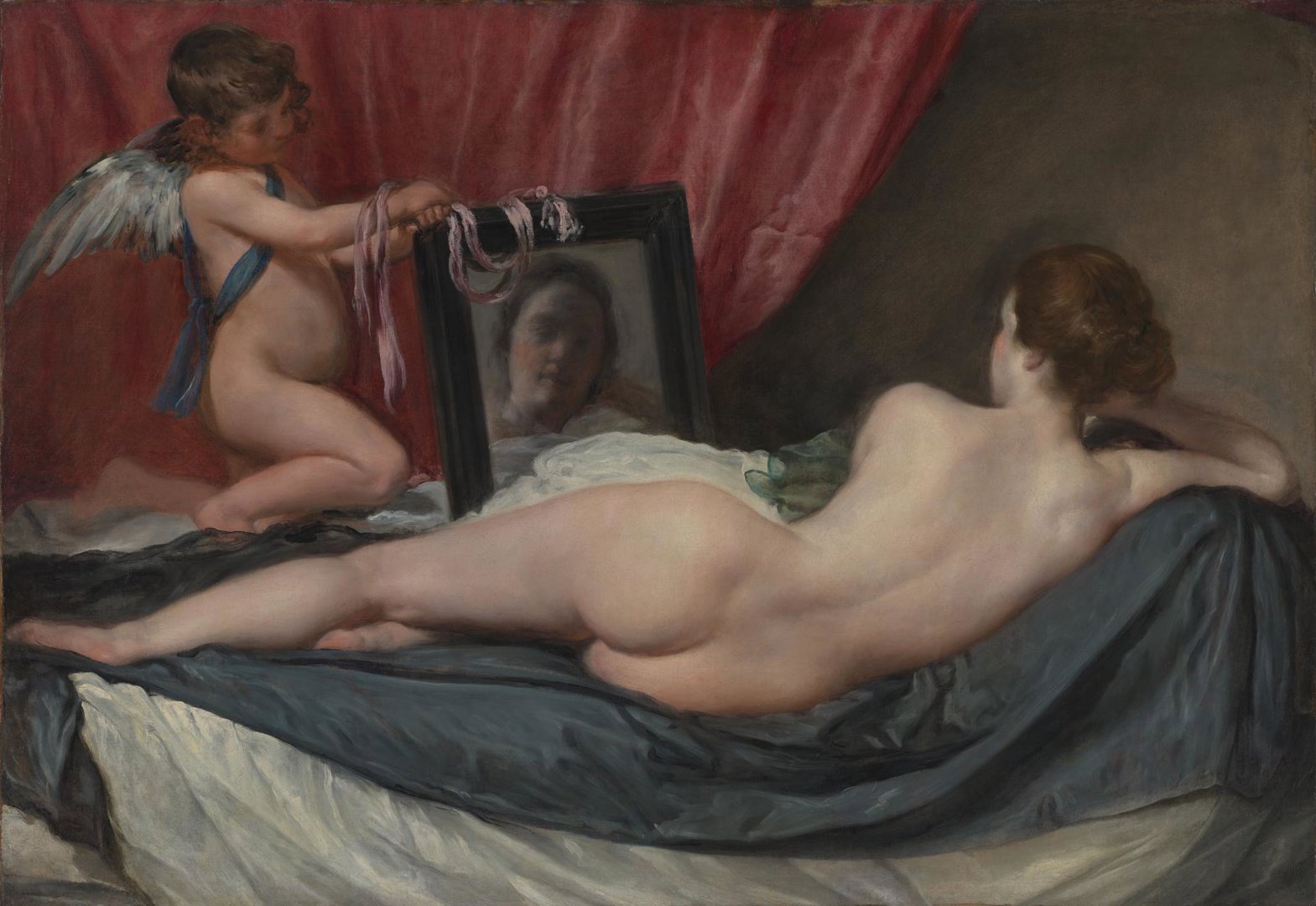Diego Velázquez's 'The Toilet of Venus ('The Rokeby Venus')'
Audio description
This is a description of an impressive oil painting by the Spanish artist Diego Velazquez. Painted between 1647 and 1651 it is notably large, measuring over a meter in height and nearly two meters in width. Officially titled ""The Toilet of Venus,"" this painting is better known as the ""Rokeby Venus,"" named after where it hung at Rokeby Hall in County Durham during the 19th century. The painting features a reclining female nude on a bed, with sumptuous swathes of material draped around her – this is Venus, the goddess of love and beauty. Her back is turned to us, and there is a winged cupid figure holding up a mirror, which reveals her face to us in the reflection. At the peak of his career, Velazquez served as the chief painter to the Spanish King Philip IV, and this painting is the artist’s only surviving nude painting. Velazquez has used the background of the painting to frame and give prominence to the subjects in the painting. In the upper right-hand corner, a stark and dark grey wall serves as a backdrop, creating a sense of depth. A lavish, deep red curtain sweeps across the top left corner, enveloping the scene in opulence, and adding a sense of drama to the composition. Dominating the image, is a sensual female nude of Venus who lies on a bed that fills the foreground of the painting. She lies nonchalantly, stretched out on the bed with her head on the right, and her toes stretching to the left edge of the canvas. The curves of her body are echoed by swags of grey silk bedcovers on the white sheets beneath her. Venus is leaning with her head propped up on her right hand-her chestnut coloured hair is loosely pinned just above the
nape of her neck. She faces the mirror being held up by the winged Cupid on her left. Her head is slightly turned towards the mirror revealing a rounded, rosy cheek and a pert chin. Velazquez has painted Venus, with long, smooth brushstrokes, in pale pink and white tones, giving the figure a translucentness and a luminosity. Cupid is shown as an angelic young boy, with delicate, childlike features, with soft brown curls. He is positioned with one knee bent, kneeling at the end of the bed facing Venus. Cupid's most distinctive feature are his small white and grey feathered wings sprouting from his back. Using both hands, to hold up a rectangular black framed mirror which reflects Venus’ face. He wears a blue silky sash across his torso and holds a length of pink ribbon which drapes and curves over the frame of the mirror. This may be associated with the binding of lover’s hearts. Cupid’s gaze is cast down at his hands on the mirror. Unlike the careful attention paid to the definition of the figures and draped layers of fabric, the reflection of Venus’ face is a blur-with undefined facial features and a harsh redness to the cheeks. The fact that the viewer observes this Venus figure from behind, is what makes this such a compelling image and the only direct contact we have with her is through the reflection of her face in the mirror, which remains strangely obscure. Velazquez only left Spain twice in his lifetime. And it was during or after the second occasion he created this work. At the time that this work was made, it was forbidden to own or paint a female nude, so we don’t know who this work
was initially commissioned by. But what was Velazquez trying to convey to us with the blurring of the face in the mirror? Was his Venus a real woman whose identity he was trying to keep hidden? Is it about the transient nature of youth. Or was he inviting us to project our own idea of ideal beauty is on to her? Whatever the reasoning behind Velazquez’s artistic decisions, they will forever remain on the canvas with the Rokeby Venus.


